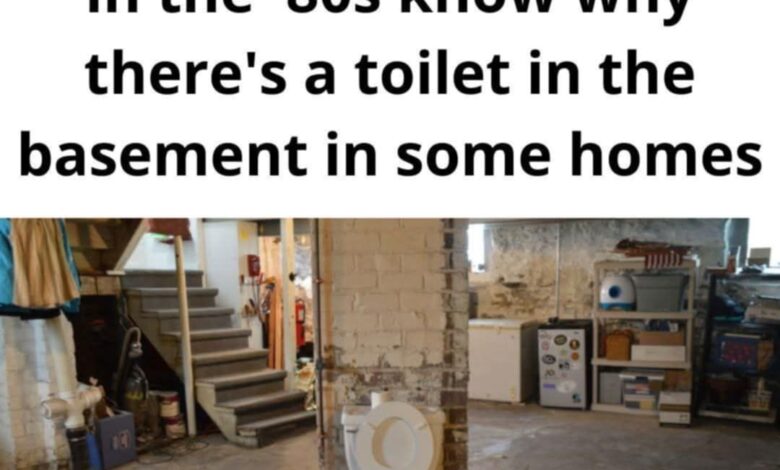Why Historic Homes Feature Mysterious Basement Toilets: The Surprising Truth Behind This Vintage Home Design

Living in a historic home renovation project brings countless discoveries, from vintage hardwood floors to original crown molding. However, one feature consistently puzzles new homeowners: the solitary toilet positioned in unfinished basements across America’s older residential properties.
The Mystery Behind Standalone Basement Fixtures
Many vintage home buyers encounter this peculiar home improvement puzzle during their first property inspection. These isolated bathroom fixtures appear without accompanying vanities, enclosed walls, or proper ventilation systems. Instead, they sit conspicuously on concrete basement floors, often near utility areas or storage spaces.
This architectural curiosity isn’t a construction mistake or amateur DIY project gone wrong. These installations represent thoughtful home design solutions from America’s industrial era, particularly in manufacturing cities where blue-collar workers needed practical home solutions.
Pittsburgh Potties: Industrial-Era Home Innovation
Real estate professionals and home restoration experts recognize these fixtures as “Pittsburgh potties,” named after the steel city where they became standard features in working-class neighborhoods. These bathroom installations served essential functions for families whose breadwinners worked in demanding industrial occupations.
Historic homes in manufacturing regions often featured separate basement entrances, allowing workers to enter directly from outdoor work areas. This home design enabled laborers returning from steel mills, factories, or construction sites to clean up without tracking industrial debris through main living areas.
Smart Home Design for Working Families
The basement toilet system offered multiple home improvement benefits:
- Protected expensive interior flooring and furniture from workplace contamination
- Maintained hygiene standards in primary bathroom spaces
- Provided convenient facilities for outdoor workers and gardeners
- Supported efficient home maintenance routines
Advanced Plumbing Protection: The Engineering Advantage
Beyond convenience, these basement fixtures served crucial plumbing infrastructure purposes. Pre-1940s municipal sewer systems frequently experienced capacity issues, especially during severe weather events or peak usage periods.
Preventing Costly Home Damage
Smart homeowners and experienced contractors understood that sewer backups inevitably sought the lowest accessible entry points. By installing strategic basement toilets directly above main sewer connections, property owners created controlled overflow systems.
When municipal sewer systems exceeded capacity, backups would emerge through basement fixtures rather than damaging expensive upstairs bathrooms with:
- Custom tile work and luxury finishes
- Built-in cabinetry and vanities
- Electrical systems and lighting fixtures
- Drywall and premium paint treatments
Modern Home Buying and Vintage Property Investment
Today’s real estate market shows strong demand for historic home restoration projects. Property investors and renovation enthusiasts recognize that understanding original home design features helps preserve authentic architectural character while ensuring modern functionality.
Home Inspection and Property Value Considerations
When evaluating vintage properties, experienced real estate agents and home inspectors examine basement toilet installations for:
- Original plumbing system integrity
- Proper drainage and ventilation
- Compliance with current building codes
- Potential renovation opportunities
Conclusion: Appreciating Historic Home Intelligence
These seemingly random basement fixtures represent ingenious solutions from an era when home design prioritized practicality and property protection. Whether you’re considering historic home investment, planning renovation projects, or simply curious about vintage architecture, understanding these design elements helps appreciate the thoughtful engineering behind America’s residential heritage.
Modern homeowners can learn valuable lessons from these practical home improvement strategies, especially when planning basement renovations or addressing contemporary plumbing challenges in older properties.